Break Beef Ribs for Bone Broth
Here's the ultimate guide to beef bones–what to do with each type, recipes, and where to buy!
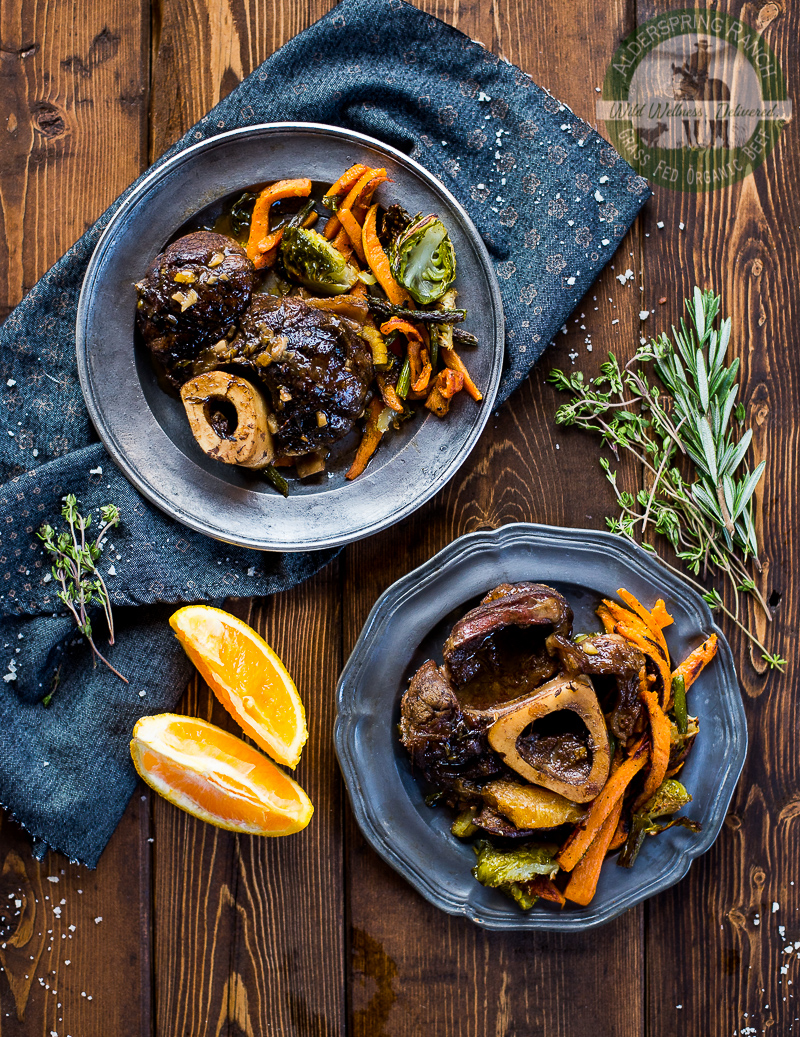
Above: beef shank with orange and thyme. Get the recipe here.
What you should know about buying beef bones/ribs:
The important thing to know about beef bones and ribs is that you should always try to buy 100% grass fedandorganic beef bones. Why? Because during its lifetime, a cow's body will store toxins in bones. When you cook your bones, all those toxins come out and end up in your body. This can include things like weed spray the cow ate, heavy metals, insecticides, and more nasty stuff that you definitely don't want to be eating. Here are things to note before deciding where to buy bones for bone broth or where to buy beef shank:
- Make sure the animal was 100% grass fed. Labelers can get a bit tricky by labeling just "grass fed," but this means that the cow may have only eaten grass for part of its life. 100% grass fed means the cow has eaten grass it's entire life (since it was weaned, anyway).
- There is actually no official definition of the term "grass fed," so even terms like "100% grass fed" don't guarantee the animal was only fed grass and hay during its lifetime. The best way to be sure your beef is 100% grass fed is to know who your farmer is and ask about their practices!
- You also may want to ask your producer about things like weed spray. Ask if they use any kinds of insecticides, pesticides, herbicides, or fungicides. Just keep in mind that grass fed doesn't necessarily mean "cide" free.
- One way to ensure that your bones are going to be chemical and toxin-free is to buy certified organic. The organic certification requires that there are no chemicals, GMOs, weed sprays, antibiotics, hormones, or insecticides involved. However, the organic certification doesnotguarantee 100% grass fed, so both 100% grass fed and certified organic is a good combination to look for.
Ribs
Ribsarebones, but unlike the soup bones you'll find below, beef back ribs and short ribs have thin bones with lots of meat attached. The meat, when cooked down, is very flavorful and tender but without the strong (though not always bad) "beefy" flavor of the marrow bones (more on those later). Short ribs and back ribs are famously good with Texas-style barbecue sauce.
Short Rib of Beef
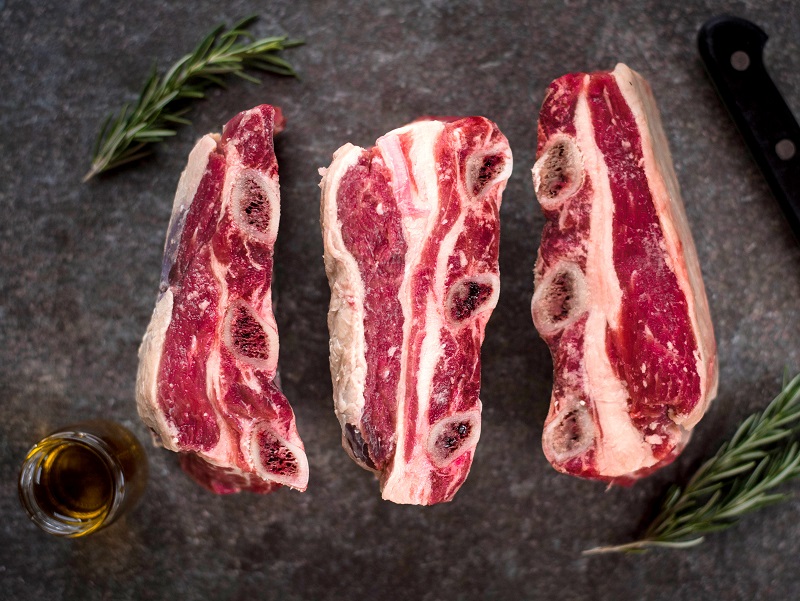
The rundown:Meatier than the back rib, short ribs are a delicious cut packed with flavor. Short ribs come from the lower rib cage of the cow called the "short plate."
How to cook:short ribs are incredibly easy to make. They should be cooked long and slow to tenderize the tough meat around the bone, but this is simple when you just put them in the slow cooker at about 200 degrees F for around 8 hours. Another cooking method that's a little more involved is to smoke them (also long and slow) in your smoker. Don't forget barbecue sauce!
Short ribs, however, aren't just restricted to barbecue sauce. You can make delicious short ribs with citrus fruits, wine, or Asian sauces.
Where to buy short rib of beef:you can find our certified organic, 100% grass fed beef short ribs on our online store.
Korean Style Short Ribs (or Flanken Ribs)
The rundown: Korean Style short ribs are cross cut ribs cut in quarter to half inch thickness in 3-7 rib segments. The thinner nature of the ribs mean they cook up faster and are more tender!
How to cook: We like these best right on the grill (we recommend rinsing bone dust off first; just pat dry). Just salt and pepper to taste over a hot grill for a quick caramelization process, and you are good to go. Let rest for 2 minutes, and serve alone or with rice. Here's how to grill korean-style short ribs (aka flanken ribs).
We also enjoy these marinated in a good fermented soy sauce with some garlic and onions, then quick fried in a hot cast iron wok. Served with some stir fried vegetables over rice, you have a savory meal in just a few minutes. Occasionally, in the interest of time, we have skipped the marinade by just soaking them in the above sauce and dropping them right into the hot wok–a little chewy, but tasty nonetheless. Here's one way to marinade those flanken ribs.
Where to buy organic grass fed korean-style (flanken) short ribs: You can find our organic, grass fed flanken ribs here.
Beef Back Ribs
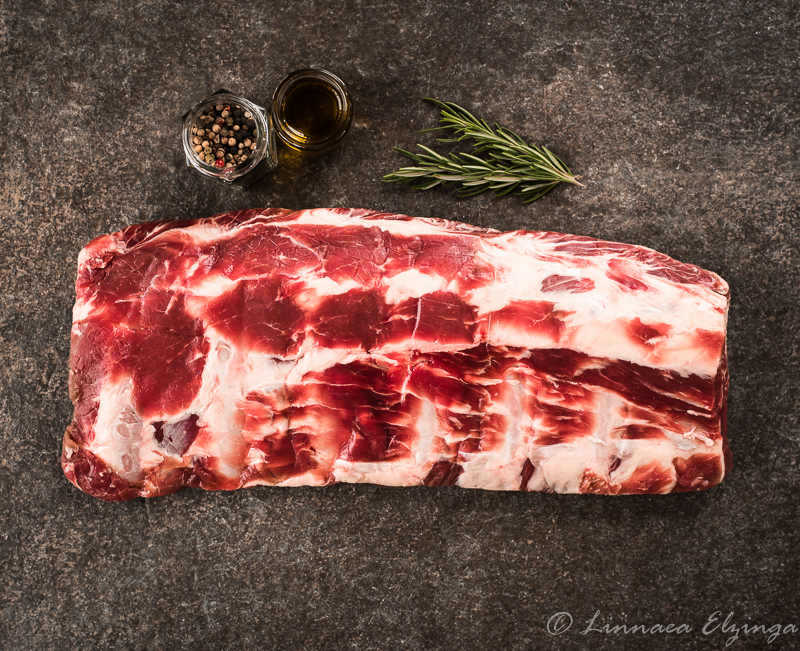
The rundown:as said earlier, beef back ribs have a bit less meat on them than short ribs. They also traditionally come in "racks" as pictured above, but if you don't have room in your crock pot or need a smaller size, you can cut between the bones where there is just meat. This is also how you serve beef back ribs when they are cooked. Back ribs come from, well, thebackof the cow and from the same area as the ribeye, or prime rib (hence the delicious flavor)! Beef back ribs may also be referred to as just "ribs."
How to cook:back ribs can be cooked much like short ribs, though they perform even better on the smoker than short ribs do. Just remember these key words: low and slow. And with barbecue sauce. Lots of barbecue sauce.Here's a recipe and video on how we like to smoke our back ribs.
For the slow cooker, the process is much the same as short ribs: make sure there's plenty of sauce (any sauce that compliments the meaty flavor of back ribs works) and cook at around 200 degrees F for about 8 hours for delicious back ribs.
Where to buy beef ribs: you can find our certified organic, 100% grass fed beef back ribs on our webstorehere.
Bones
Unlike beef ribs, beef bones have more marrow, gelatin, and all the great health benefits that go with. They also have a more intense beef flavor, though it isn't unpleasant. The broth and meat from beef bones can be absolutely incredible in stews or eaten plain for health reasons. People have been making and eating bone broth for thousands of years. Since humanity has survived this long, they must have been doing something right.
Beef Shank/Ossobuco
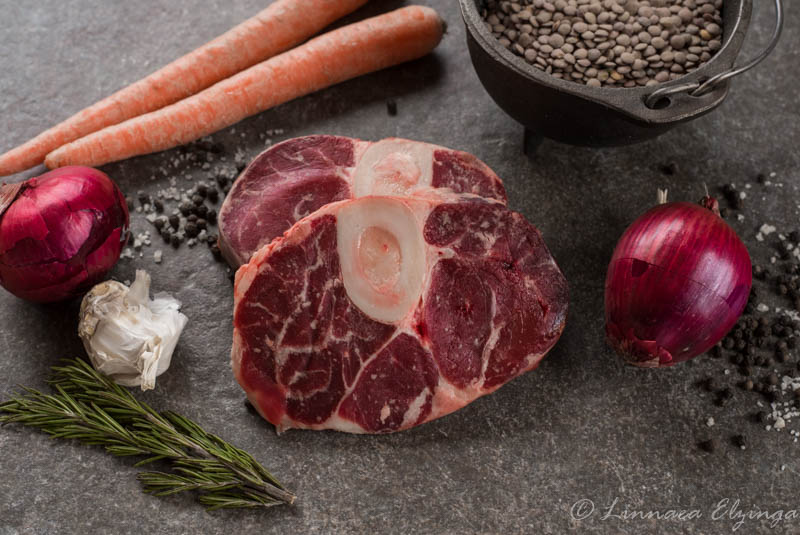
The rundown:I'm actually pretty passionate about beef shanks. They haveincredibleflavor: it's rich and meaty, but it's not overpowering as bone broth can occasionally be. The bone in the beef shank also adds to the flavor and is full of all those bone health benefits you've heard about: marrow, gelatin, the works.
Cooking beef shank:beef shank can make incredible beef bone soup because of the marrow and meaty flavor of the shank. Not to mention that shanks/ossobuco provide the meat for you, so you don't have to add stew beef or anything. Beef shanks can make some of the most flavorful and satisfying stews and soups you've ever eaten. Here's a favorite for beef bone soup with beef shanks and lentils.
Another way to cook beef shank is in the slow cooker (there's something magical about slow cookers, I'm telling you). For a successful slow cooker supper, you just need to remember the two principles we talked about above: low and slow, and make sure there's plenty of liquid. For beef shanks, you're probably going to want them half-covered in liquid so they can also brown. See the beef shank recipe at the very top of this page to see what I mean!
Where to buy beef shank:you can find grass fed, certified organic beef shanks (called osso bucco on our store) right here.
Beef Bones for Broth
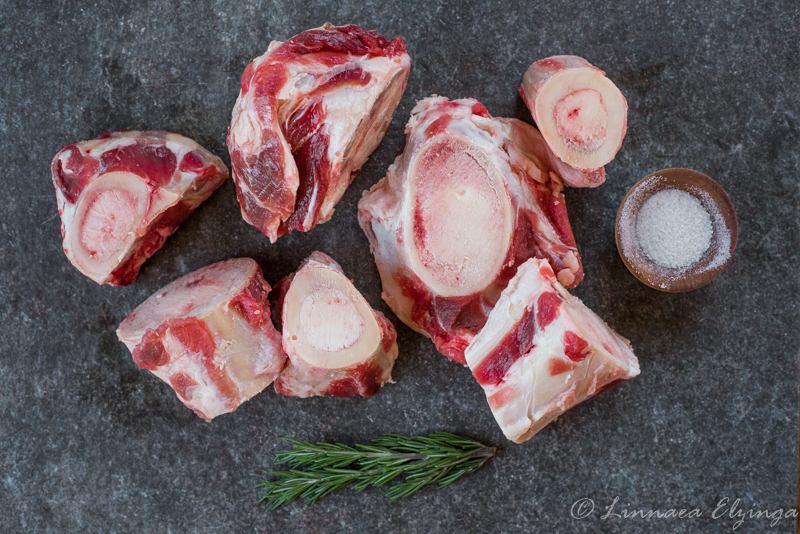
The rundown:first off, there are tons of bone broth benefits that you can read all about here. Bone broth does have a very strong flavor which some people find distasteful. Others complain of wonky undertones, but if you buy quality 100% grass fed bones, you shouldn't have any weird flavors. If you don't like plain bone broth, at least make it for the added richness, flavor, and health benefits in beef bone soup, stews, and the like. Some people even substitute it for water in recipes like rice or coffee. Okay, I'm kidding on the coffee.
Making bone broth:it's pretty simple. Our method is this: brown the bones at around 350 degrees in the oven in a baking pan. Once lightly brown, put the bones in a large soup pan, then rinse the pan with water to pick up all the fat and juices and pour that into the soup pan as well. Then fill the pan enough to cover the bones and then some. Bring to a boil, then simmer for 12-24 hours. Don't forget, however, to add more water from time to time so it doesn't simmer away! For a full recipe with directions and ingredients, click here.
Where to get bones for bone broth:you can find our grass fed, certified organic bones for bone brothhere.
Beef Neck Bones
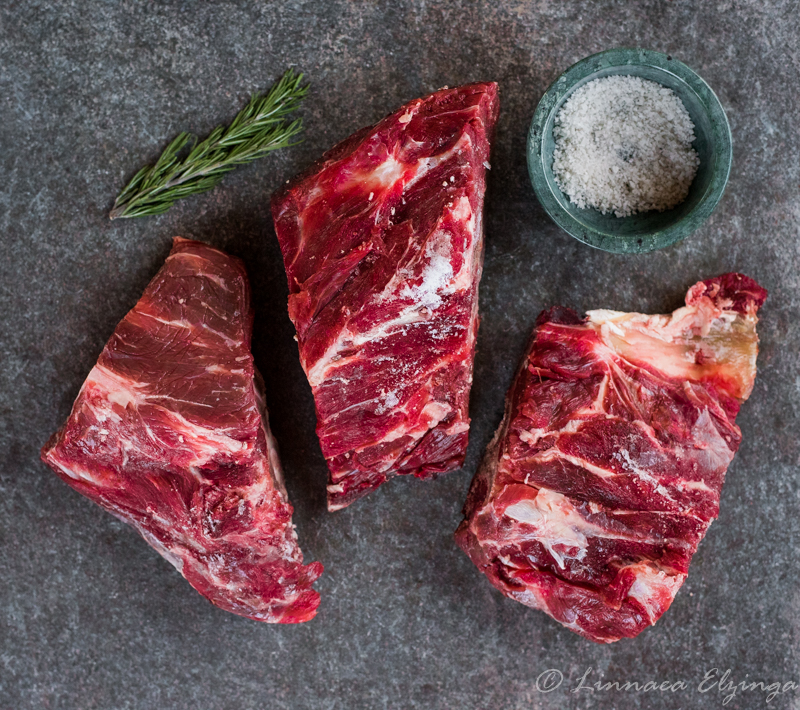
The rundown:beef neck bones aren't quite like your traditional marrow bones, though youcanuse them for bone broth. They are quite a bit meatier than marrow bones, so you'll get much stronger flavor, fat, and "meatiness" in your bone broth.
Cooking neck bones: You can cook neck bones like marrow bones above. However, if the bones simmer long enough, the meat will fall of the bones. You can strain the broth for a pure (but very meaty-tasting) bone broth, or you can use neck bones for a stew similar to osso bucco stew above.
You can also cook neck bones like osso buccos: low and slow, lots of sauce, and for around 8 hours at 200 degrees F. They make good taco meat or just the main meat dish for your dinner!
Want to save this guide to ribs and bones for later? Pin the image below to save!
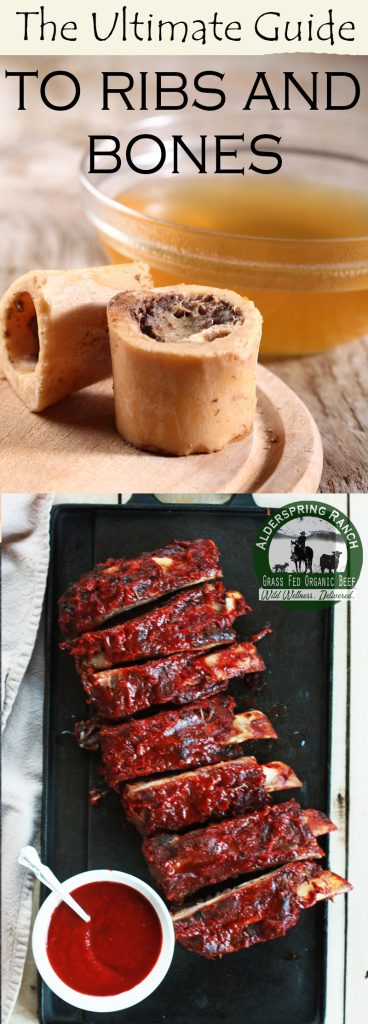
Source: https://www.alderspring.com/meathacker/grass-fed-organic-beef/beef-ribs-bones/
0 Response to "Break Beef Ribs for Bone Broth"
Post a Comment